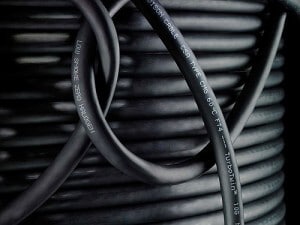For Category 5e and 6, there is no minimum length requirement. ANSI/TIA/EIA-568-B.2-1 in Annex K does give a warning about reflected FEXT on shorter links with minimally compliant components. The obvious solution is not to purchase minimally compliant components. In the early days of Cat 6 when vendors were struggling to do better than marginally compliant, short links were an issue. Today, this is not an issue if you stay with a main stream vendor.
Within this same standard, there is also advice on distance when using a consolidation point. It advises a minimum distance of 5 m between the CP and TO. In ISO/IEC they are a little more clearer is specifying 15 m between the DP and CP. This is all for Category 6/Class E.
With regards to Category 6A, there is a minimum length requirement – kind of. In Annex J of ANSI/TIA-568-B.2-10 is describes worst case modeling using a 10 m link. The suggestion therefore is that you should not go less than 10 m. But again, that is with minimally compliant components. As with Category 6 stated above, there are now components available that will give you passing field tests below 10 m. HOWEVER, even vendors with good components may still have a minimum length requirement in their design specifications. The only way to know where you stand is to talk to the vendor AND test it to see.
If you are talking specifically about patch cords, then 0.5 m is the implied minimum length in ANSI/TIA/EIA-568-B.2-1 for a certified patch cord. That’s because the math for the limit lines really does not work below this. Infact, getting a certified patch cord of 0.5 is going to be tricky. Many vendors only offer a certified patch cord of 1.0 m or longer. I suspect that this may be the most useful information with regards to your question.
Kind regards
Adrian Young
Sr. Customer Support Engineer
Fluke Networks Technical Assistance Center
6920 Seaway Blvd, Everett, WA 98203
Toll Free 1 800 283 5853
International + 1 425 446 4519
Are you current with your software?
– DTX Version 2.12
– LinkWare Version 5.0 (New NOV 08)
– AxTalk Analyzer Version 3.0
– OptiFiber Version 2.2.1
– CableIQ Reporter 1.31
– CableIQ Version 1.3
– DSP Version x.925
http://www.flukenetworks.com/fnet/en-us/supportAndDownloads
Kind regards
Adrian Young
Senior Technical Support Engineer
Fluke Networks Technical Assistance Center






